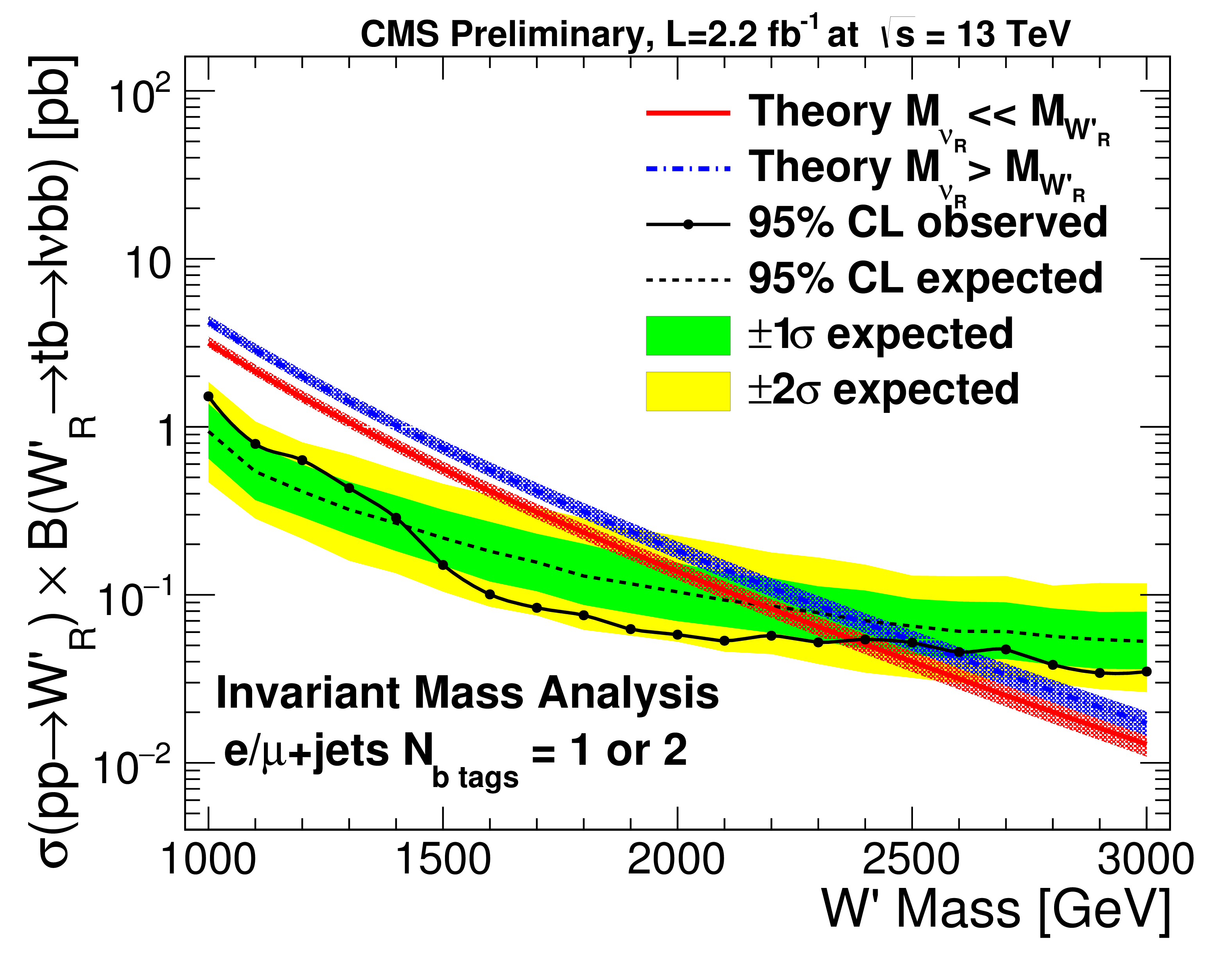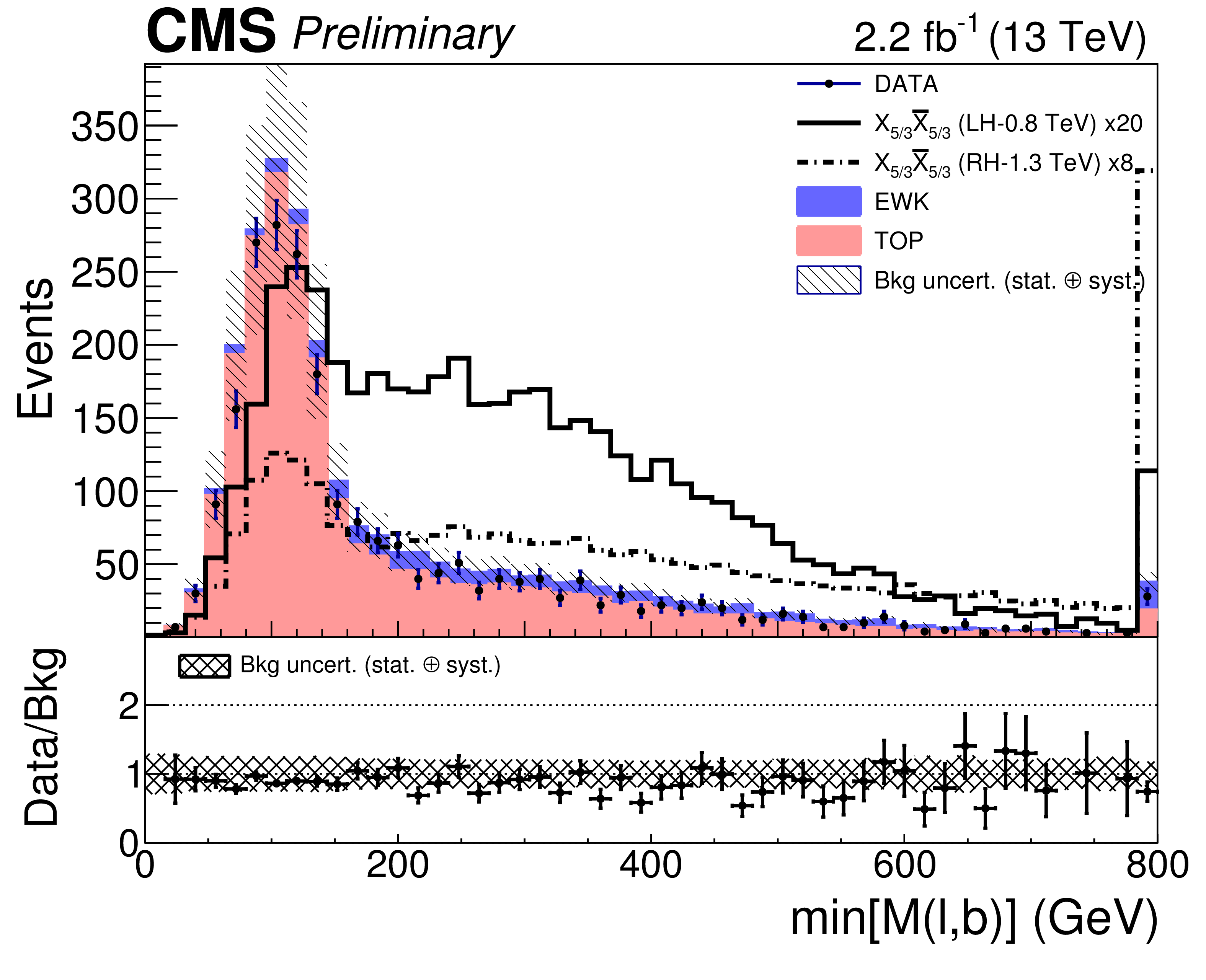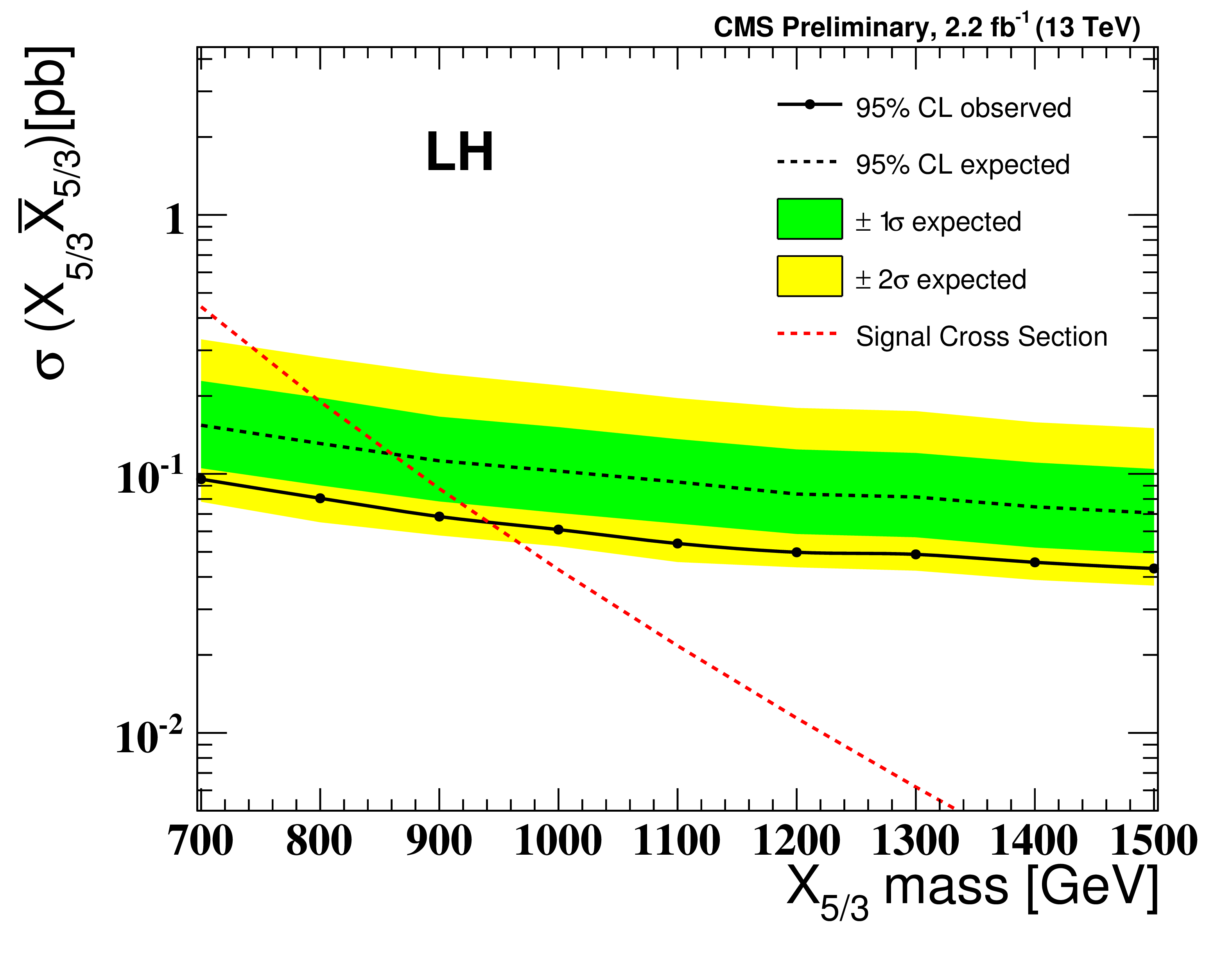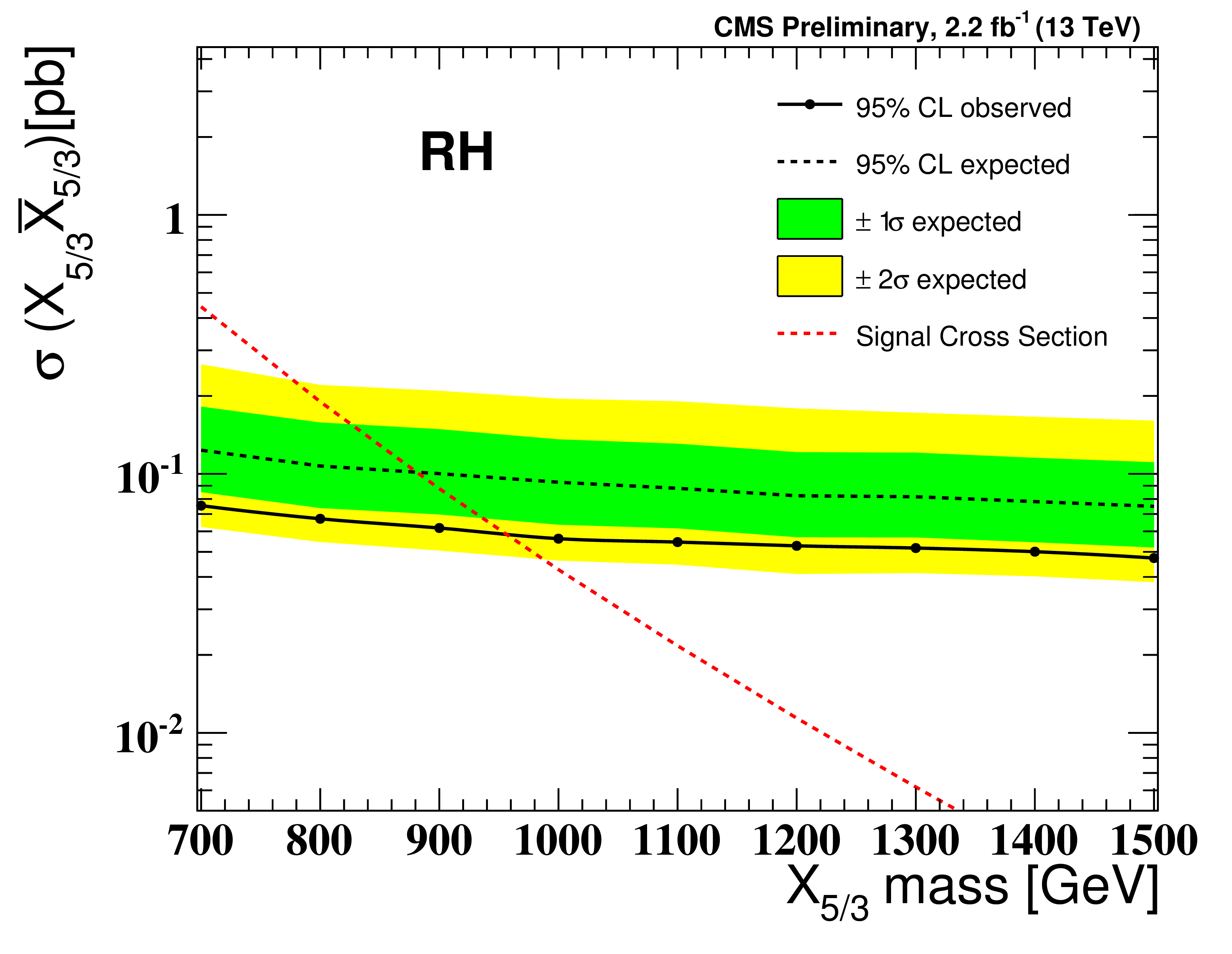
 Compact Muon Solenoid
LHC, CERN
Compact Muon Solenoid
LHC, CERN
|
CMS-PAS-B2G-15-004
|
Search for $\mathrm{W^\prime}$ boson resonances decaying into a top quark and a bottom quark in the leptonic final state at $\sqrt{s}=$ 13 TeV
|
|
|
Although the Standard Model of Particle Physics has been very successful in describing our world, we know that it is not a fully complete theoretical description. Many theories which attempt to expand and explain gaps in the Standard Model predict additional, as of yet undiscovered, particles. One type of particle, which is predicted by many of these theories, is a heavy new gauge boson, commonly referred to as a W' boson. Previous experimental constraints, both from precision measurements as well as collider searches, suggest that if they exist, W' bosons must be very heavy.
For this particular search, we focus on the decay of the W' boson to a top and a bottom quark, where the top quark decays leptonically to an additional bottom quark, a charged lepton, and a corresponding neutrino. The search therefore makes use of the full extent of the CMS detector to accurately measure all these particles, except for the neutrinos whose existence is interpolated by applying conservation of momentum to each collision. Using techniques which focus on reconstructing heavy W' bosons, we are able to measure the invariant mass of the top and bottom quark in our events, and search for signal production not predicted by the Standard Model using this spectrum.
|

|
The invariant mass distribution of the top and bottom quark system, "M(tb)", measured in events with a muon and at least 1 jet tagged as originating from a b quark. The various colored histograms represent different types of backgrounds predicted by the Standard Model, and the black points represent the collected data. The dashed lines represent the distribution of hypothetical W' signals for masses of 1.6, 2.0, and 2.5 TeV.
|

|
95% confidence level upper limits on the branching fraction times cross section for W' bosons decaying to a top and bottom quark, measured as function of the W' mass. The red and blue curves represent the predicted cross section times branching ratio for two different theoretical scenarios, and the shaded area around these curves represent the theoretical uncertainties. For each W' mass, values above the solid line are excluded.
|
Various extensions of the standard model predict new heavy particles for addressing the hierarchy problem caused by corrections to the mass of the Higgs boson. The largest of these corrections are due to the top quark and can be cancelled by the existence of heavy partners of the top quark. In this analysis, we search for the X5/3, a top partner with exotic charge 5e/3 (where e is the charge of the electron), using 2.2 fb$^{-1}$ of data collected by the CMS detector at a center-of-mass collision energy of 13 TeV.
We assume that the X5/3 decays to a top quark and a W boson and consider two distinct channels. In the same-sign dilepton channel, one of the top partners decays into same-sign dileptons while the other one decays inclusively. For the single lepton channel, one of the W bosons from any of the top partners decays leptonically while the other three decay hadronically. The leptons considered in this analysis are electrons and muons. Combining the two channels, for a right-handed X5/3, the 95% confidence level lower limit on the top partner mass is set at 960 GeV whereas for the left-handed X5/3, it is 940 GeV.
|

|
The distribution of the scalar sum of transverse momenta of all leptons and jets for events in the same-sign dilepton channel with at least two jets.
|

|
The minimum pairwise mass of the lepton and any b-tagged jet in data and simulation for selected events in the single lepton channel with at least four jets and lepton transverse momentum greater than 80 GeV.
|


|
95% confidence level expected and observed upper limits after combining the same-sign dilepton and lepton+jets signatures for an integrated luminosity of 2.2 fb-1 for left-handed (top) and right-handed (bottom) X5/3 signals.
|

|
Compact Muon Solenoid
LHC, CERN
|

|
Gautier Hamel de Monchenault, CMS Publications Committee








